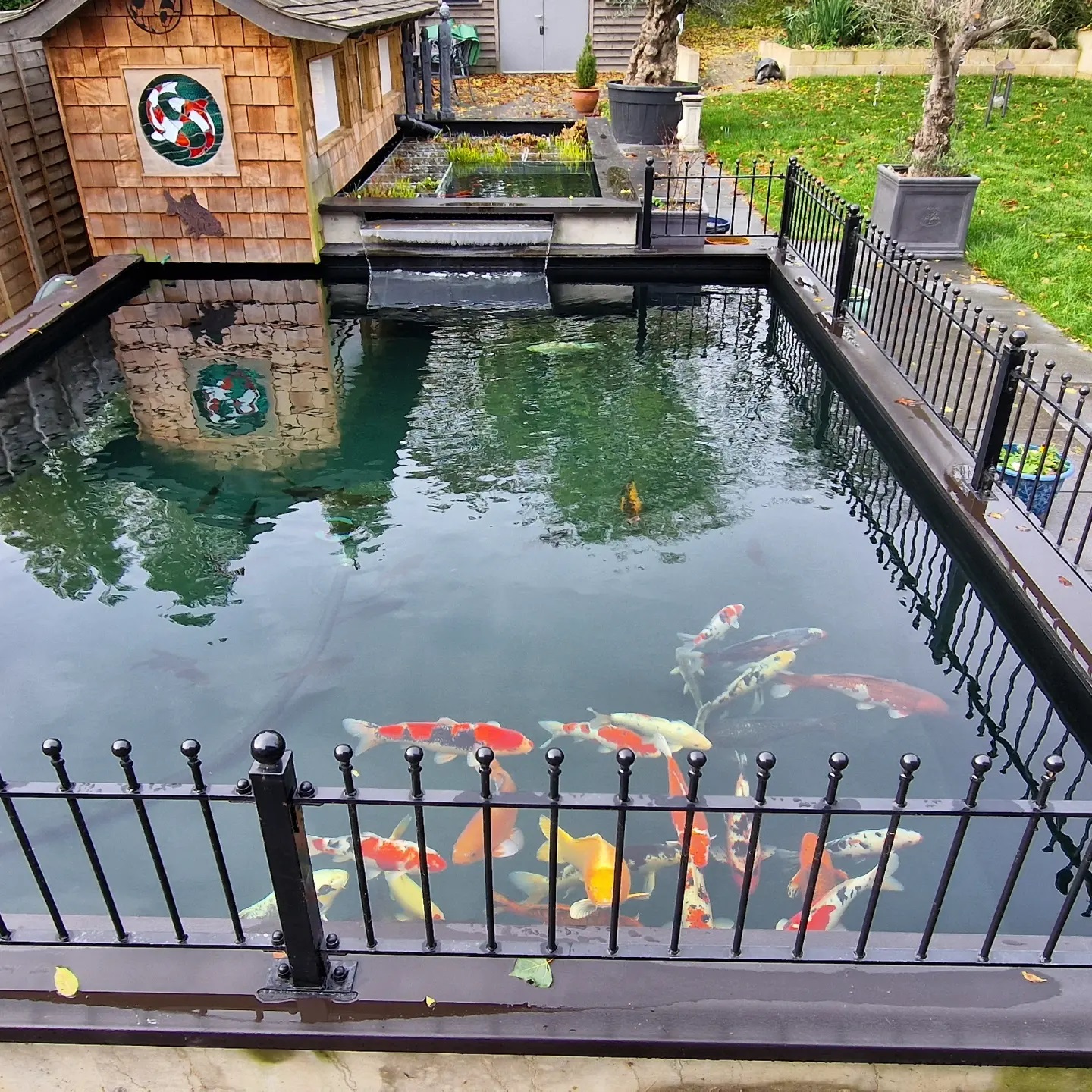
Elevating Koi Well-being: Navigating the Waters of Water Quality
Koi, with their vibrant colors and graceful presence, undoubtedly add splendor to any backyard pond or water garden. As stewards of these magnificent creatures, koi pond owners bear the responsibility of providing an optimal environment, not just in terms of living space but also by upholding the crucial factor of water quality.
The Significance of Water Quality: A Lifeline for Koi Well-being
Good water quality stands out as one of the pivotal elements in ensuring the health and happiness of koi. The repercussions of poor water quality are profound, ranging from stress to diseases and even potential mortality. To cultivate an ideal habitat for koi, it’s imperative to comprehend the key components that constitute good water quality and the methods to effectively monitor and maintain them.
Understanding pH Levels: Striking the Right Balance
pH, or the “potential of hydrogen,” gauges the acidity or basicity of pond water. Maintaining an ideal pH level between 7.0 and 8.0 ensures a stable and healthy environment for koi. Deviations from this range can lead to health issues, such as “acidosis” with low pH levels and “alkalosis” with high pH levels.
Temperature Management: Embracing the Ideal Range
Given that koi are cold-water fish, maintaining a water temperature between 60-70°F is crucial for their well-being. Drastic temperature fluctuations can induce stress and impact overall health. Strategies like pond heaters or shade installations help uphold a consistent temperature, ensuring koi comfort.
Dissolved Oxygen: The Breath of Life
Dissolved oxygen levels are paramount, with koi requiring a minimum of 5 mg/L and an ideal range between 6-8 mg/L. Levels below 5 mg/L can induce stress and even lead to fatalities. Various factors, including water temperature, movement, and organic matter, influence dissolved oxygen levels.
Monitoring and Maintaining: A Vital Ritual
Regular testing using pH, temperature, and dissolved oxygen kits forms the cornerstone of water quality management. Adjustments can be made with water conditioners to bring pH levels within the ideal range. Routine water changes aid in maintaining appropriate dissolved oxygen levels and curbing organic matter accumulation.
Filtration Systems: The Guardian of Water Purity
A well-designed filtration system is instrumental in preserving water quality. Mechanical, biological, and chemical filtration methods work in tandem to keep the water clean and free from harmful substances. Adding aquatic plants further enhances water quality by nutrient removal and oxygen contribution through photosynthesis.
Ammonia and Nitrite Levels: Balancing the Nitrogen Cycle
Monitoring ammonia and nitrite levels is crucial for maintaining a healthy nitrogen cycle in the pond. Both ammonia and nitrite can be harmful to koi. Ammonia is produced by fish waste and uneaten food, while nitrite is a byproduct of the breakdown of ammonia by beneficial bacteria. Regular testing and the presence of a well-established biological filtration system are essential.
Nitrate Levels: Managing Nutrient Levels
While nitrate is less toxic than ammonia and nitrite, elevated nitrate levels can still impact koi health. Excessive nitrate levels may lead to issues like reduced growth and compromised immune function. Regular water changes, proper filtration, and the addition of aquatic plants can help manage nitrate levels.
Alkalinity: Buffering pH Stability
Alkalinity, or the ability of water to resist changes in pH, plays a role in stabilizing pH levels. Adequate alkalinity helps prevent pH fluctuations that can stress koi. Testing and maintaining appropriate alkalinity levels contribute to overall water stability.
Hardness: Assessing Mineral Content
Water hardness, which refers to the concentration of minerals like calcium and magnesium, can influence koi health. Both soft and hard water can have implications for fish health. Monitoring and adjusting water hardness based on the specific needs of koi can contribute to a more suitable environment.
Chlorine and Chloramine: Neutralizing Harmful Additives
Tap water often contains chlorine and chloramine, which are added by water treatment facilities. These substances can be harmful to koi. Using a water conditioner before adding tap water to the pond helps neutralize chlorine and chloramine, ensuring a safe environment for the fish.
Phosphates: Managing Algae Growth
Phosphates are nutrients that can contribute to excessive algae growth in the pond. Algae blooms can impact water quality and aesthetics. Regular testing for phosphates and implementing strategies to control their levels, such as reducing nutrient input and using phosphate binders, can help prevent algae issues.
Copper and Other Heavy Metals: Avoiding Toxicity
Certain heavy metals, including copper, can be toxic to koi at elevated levels. Monitoring and controlling the presence of heavy metals, especially in areas with potential runoff from copper-based treatments or pipes, is important for preventing toxicity and maintaining koi health.
By considering these additional factors and implementing appropriate measures, pond owners can create an environment that not only meets the basic needs of koi but also supports their overall well-being and longevity. Regular testing, proper filtration, and informed adjustments contribute to a harmonious aquatic habitat for these captivating fish. Armed with a profound understanding of key water quality elements, regular monitoring practices, and swift adjustments, koi pond owners can foster an environment where their cherished companions not only survive but thrive. Through the synergy of proper water conditions, vigilant monitoring, and a well-designed filtration system, the journey with koi becomes an immersive and gratifying experience.
Matthew Adlington





